I have a very simple WPF application that renders simple shapes in a canvas:
The blue squares are ItemsControl and the red circles are Controls
The following step in my application is adding connection lines between the shapes. The shaphes will be moved and I want the connections to be automatically moved. I readed about how to do it adding connection bindings.
All worked fine with canvas direct children (container), but if I want to connect the nodes, it does not work. It seems that if I don't call Canvas.SetLeft() and Canvas.SetTop() explicitily, then Canvas.GetLeft() and Canvas.GetTop() return NAN.
How should I proceed?
- Should I implement a mechanism to get all objects placed in my canvas, so I always can calculate
Canvas.GetLeft()over all of them? - Should I proceed in another way?
Source code and screenshot

This is the source code of the example. You can find here the complete example:
public partial class MainWindow : Window
{
public MainWindow()
{
InitializeComponent();
Container container1 = new Container() { Width = 100, Height = 100 };
Node node1 = new Node() { Width = 50, Height = 50 };
container1.Items.Add(node1);
Container container2 = new Container() { Width = 100, Height = 100 };
Node node2 = new Node() { Width = 50, Height = 50 };
container2.Items.Add(node2);
Canvas.SetLeft(container2, 200);
myCanvas.Children.Add(container1);
myCanvas.Children.Add(container2);
}
}
class Container : ItemsControl
{
protected override void OnRender(DrawingContext drawingContext)
{
drawingContext.DrawRectangle(
Brushes.Blue, null, new Rect(0, 0, this.Width, this.Height));
}
}
class Node : Control
{
protected override void OnRender(DrawingContext drawingContext)
{
drawingContext.DrawEllipse(
Brushes.Red, null,
new Point(Width / 2, Height / 2), Width / 2, Height / 2);
}
}
This is how I implemented the connections between the shapes:
public Shape AddConnection(UIElement source, UIElement target)
{
Connector conn = new Connector();
conn.SetBinding(Connector.StartPointProperty,
CreateConnectorBinding(source));
conn.SetBinding(Connector.EndPointProperty,
CreateConnectorBinding(target));
return conn;
}
private MultiBinding CreateConnectorBinding(UIElement connectable)
{
// Create a multibinding collection and assign an appropriate converter to it
MultiBinding multiBinding = new MultiBinding();
multiBinding.Converter = new ConnectorBindingConverter();
// Create binging #1 to IConnectable to handle Left
Binding binding = new Binding();
binding.Source = connectable;
binding.Path = new PropertyPath(Canvas.LeftProperty);
multiBinding.Bindings.Add(binding);
// Create binging #2 to IConnectable to handle Top
binding = new Binding();
binding.Source = connectable;
binding.Path = new PropertyPath(Canvas.TopProperty);
multiBinding.Bindings.Add(binding);
// Create binging #3 to IConnectable to handle ActualWidth
binding = new Binding();
binding.Source = connectable;
binding.Path = new PropertyPath(FrameworkElement.ActualWidthProperty);
multiBinding.Bindings.Add(binding);
// Create binging #4 to IConnectable to handle ActualHeight
binding = new Binding();
binding.Source = connectable;
binding.Path = new PropertyPath(FrameworkElement.ActualHeightProperty);
multiBinding.Bindings.Add(binding);
return multiBinding;
}
The Connector object is very simple. It has a LineGeometry and exposes two DependencyProperties to calculate the start point and the end point.
public static readonly DependencyProperty StartPointProperty =
DependencyProperty.Register(
"StartPoint",
typeof(Point),
typeof(Connector),
new FrameworkPropertyMetadata(
new Point(0, 0),
FrameworkPropertyMetadataOptions.AffectsMeasure));
public static readonly DependencyProperty EndPointProperty =
DependencyProperty.Register(
"EndPoint",
typeof(Point),
typeof(Connector),
new FrameworkPropertyMetadata(
new Point(0, 0),
FrameworkPropertyMetadataOptions.AffectsMeasure));